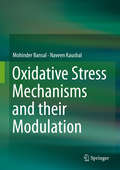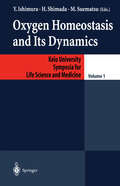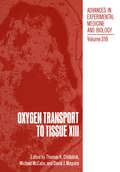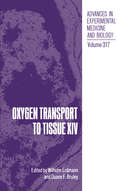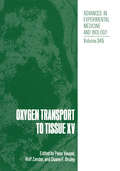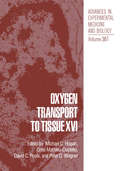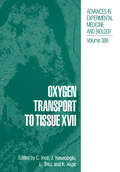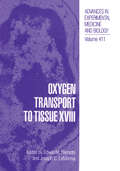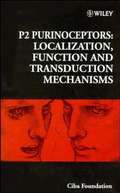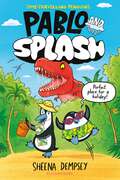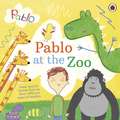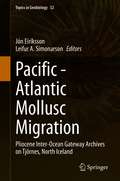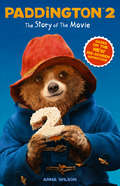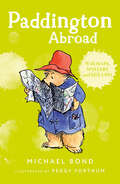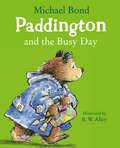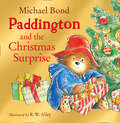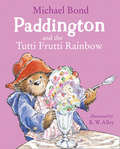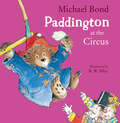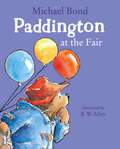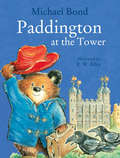- Table View
- List View
Oxidative Stress Mechanisms and their Modulation
by Mohinder Bansal Naveen KaushalResearch over the years has demonstrated that free radicals mediated oxidative stress lies at the helm of almost all patho-physiological phenomena. These findings emphasize on the need to understand the underlying molecular mechanism(s) and their critical role in the pathogenesis. This book aims to focus on these areas to provide readers a comprehensive outlook about the major redox sensitive pathways and networks involved in various disease conditions. In the first chapter of the book, basic information about the oxidative stress, its generation, its biomarkers and its role in body are discussed. In the next three chapters, the role of oxidative stress in various pathologies ranging from neurological disorders, to cardiovascular diseases, cancers, metabolic diseases and ageing have been described. Chapter 5 cumulatively describes the most important molecular signaling pathways that are affected by reactive oxygen species (ROS). These are the mechanisms which are common denominators in various pathological states. In the next part of the book, various antioxidant strategies to target and mitigate ROS have been discussed with details on the mechanisms. Selenium, being the research focus and interest of the authors for years, the role of selenium as an antioxidant as part of selenoproteins has been included in the book. Finally, the book culminates with authors’ perspective on the future of the redox biology field. Throughout the book, efforts have been made to use simplified language and suitable figures for ease to understand the contents. Although the authors have tried to touch on all the different aspects of oxidative stress in detail, the fact that it is a continuously growing field with updates coming every day, there might be some areas which might not be described in depth. This book is designed for students, young scientists to get acquainted with the redox biology. Overall, this book is a reference to understand the redox regulation of cellular signaling pathways involved in pathogenesis.
Oxygen Homeostasis and Its Dynamics (Keio University International Symposia for Life Sciences and Medicine #1)
by MakotoSuematsu HideoShimada YuzuruIshimuraThis first volume in a projected series contains the proceedings of the first of the Keio University International Symposia for Life Sciences and Medicine under the sponsorship of the Keio University Medical Science Fund. As stated in the address by the President of Keio University at the opening of the 1996 symposium, the fund of Dr. Mitsunada Sakaguchi. The Keio was established by the generous donation University International Symposia for Life Sciences and Medicine constitute one of the core activities of the fund. The objective is to contribute to the international community by developing human resources, promoting scientific knowledge, and encouraging mutual exchange. Every year, the Executive Committee of the Interna tional Symposia for Life Sciences and Medicine selects the most interesting topics for the symposium from applications received in response to a call for papers to the Keio medical community. The publication of these proceedings is intended to publicize and distribute information arising from the lively discussions of the most exciting and current issues during the symposium. Weare grateful to Dr. Mitsunada Sakaguchi, who made the symposium possible, the members of the program committee, and the office staff whose support guaran teed the success of the symposium. Finally, we thank Springer-Verlag, Tokyo, for their assistance in publishing this work. Akimichi Kaneko, M. D. , Ph. D.
Oxygen Transport to Tissue XIII (Advances in Experimental Medicine and Biology #316)
by Thomas K. Goldstick Michael McCabe David J. MaguireThe International Societyon Oxygen Transport to Tissue (ISOTT) was founded in 1973 "to facilitate the exchange of scientific information among those interested in any aspect of the transport and/or utilization of oxygen in tissues". Its members span virtually all disciplines, extending from various branches of clinical medicine such as anesthesiology, ophthalmology and surgery through the basic medical sciences of physiology and biochemistry to most branches ofthe physical sciences and engineering. The eighteenth annual meeting of ISOTT was held in 1990 for four days, from July 19 to 22, in the Sheraton Hotel in Townsville, Queensland, Australia. The usual ISOTT format, which was originated in 1985 by Dr. Ian Longmuir, was continued. Almost all presentations were posters with an accompanying, scheduled, brief, slide presentation and discussion. All posters remained in place for the entire four days of the meeting. There were no simultaneous sessions. Essentially all aspects of physiological transport were covered at this meeting with possibly somewhat more emphasis on methods and instrumentation. The editors gratefully acknowledge the photographic skills of Dr. Jens Hoper who took the group picture during the outing to Magnetic Island on July 21. We are also most grateful to Dr. Rod D. Braun of Evanston for his invaluable editorial assistance. This volume is the thirteenth in the Plenum series Oxygen Transport to Tissue.
Oxygen Transport to Tissue XIV (Advances in Experimental Medicine and Biology #317)
by Wilhelm Erdmann Duane F. BruleyThe International Society on Oxygen Transport to Tissue (IS OTT) was founded in 1973 as a scientific society providing a forum for bioengineers, basic scientists (physiologists, biochemists and physicists) and clinicians (including anesthesiologists, intensive care specialists, pediatricians, neonatologists, internists, surgeons and other specialists) to facilitate the exchange of scientific information among those interested in any aspect of the transport and/or utilization of oxygen in tissues. From the ranks of its members, many fundamental discoveries and inventions have been made involving the many aspects of oxygen transport and utilization by biological tissues. The ISOTT proceed ings, now in its 14th edition, has become a standard work in the field as witnessed by the inclusion in the Science Citation Index of all volumes published so far. The 19th ISOTT Meeting was held in Cura~ao from August 24th through August 30th, 1991. The Cura~ao Meeting attracted 145 registrants and 45 accompanying persons. The format originated by Dr. Ian Llngmuir in 1985, consisting of posters ac companied by an abbreviated oral summary, was again successfully handled with slight modifications. The meeting was introduced by 6 review lectures covering the whole field of oxygen transport from bioengineering, the problem of diffusion in lung, blood and tissue through pathology of oxygen uptake in the lung, oxygen supply dependency of the critically ill to artificial oxygen carriers. A special session dealt with oxygen sup ply under ambiant pressure changes.
Oxygen Transport to Tissue XV (Advances in Experimental Medicine and Biology #345)
by Peter Vaupel Rolf Zander Duane F. BruleySeventeen years after the 2nd International Symposium on Oxygen Transport to Tissue, which was held in Mainz in March 1975, the local Organizing Committee and the Board of ISOTT were pleased to host the ISOTT Conference in Mainz on the Rhine again. The venue of the 20th meeting was the prestigious, fully restored Schloss Waldthausen (Waldthausen Castle) which provided a special setting for ISOTT 1992. The beautiful front view of the castle became part of the ISOTT 1992 logo. The 20th ISOTT Meeting was held in Mainz from August 26th through August 30th, 1992. The Conference attracted 200 active participants from 16 countries. The theme of this meeting emphasized oxygen transport to tumors but as in earlier meetings, essentially all aspects of oxygen transport within the body were covered as demonstrated by the manuscripts comprising this volume of the series "Oxygen Transport to Tissue". All manuscripts were reviewed. Extensive revisions were made in about 25% and modest revision in about another 30%. Because we had to compromise between the aim of rapid publication on the one hand and the need for thorough review on the other, minor errors in format and some typographical errors were not corrected. Except for some revisions, all of the original camera-ready manuscripts in this volume were prepared by the authors themselves and we greatly appreciate their cooperation.
Oxygen Transport to Tissue XVI (Advances in Experimental Medicine and Biology #361)
by Michael C. Hogan Odile Mathieu-Costello David C. Poole Peter D. WagnerSince its inception in 1973, The International Society on Oxygen Transport to Tissue (ISOTT) has provided a unique forum to facilitate and encourage scientific interaction and debate. Welcoming scientists and clinicians from a broad spectrum of disciplines, each with their own particular skills and expertise, ISOTT unites them under the common theme of oxygen transport. The successful blend of scientific presentations and informal discussion which characterizes ISOTT is epitomized best by the many fundamental discoveries and technical advancements which it has spawned. The breadth and strengths of The Society's scientific base promotes the rapid progression of ideas from theoretical concepts to rigorous scientific testing and often, ultimately to the clinical arena. Each publication of the ISOTT proceedings has been recognized by Science Citation Index listing and the papers frequently establish scientific precedents and become considered as standard works in their respective fields. The 21st ISOTT Meeting was held in San Diego from August 14th through August 18th, 1993. The San Diego Meeting attracted about 150 registrants and 40 accompanying persons. Ten state-of-the-art lectures were presented by international experts in ~ transport and there were in addition two symposia -one dealing with assessment of tissue hypoxia and the other with functional heterogeneity in different organ systems. There were 100 free communications, consisting of posters accompanied by an abbreviated oral summary. All manuscripts were reviewed by the Editors for form and content, but as is customary for the ISOTT proceedings, rigorous scientific peer review was not undertaken.
Oxygen Transport to Tissue XVII (Advances in Experimental Medicine and Biology #388)
by Can Ince J. Kesecioglu L. Telci K. Akpirnd The 22 meeting of the International Society on Oxygen Transport to Tissue (LS. O. T. T. ) of which this volume is the scientific proceedings, was held in Istanbul, Turkey on August 22-26, 1994. It was a historical occasion in that it was almost 200 years to the day that one of the founding fathers of oxygen research, Antoine Lavoisier, on May 8, 1794 found his early demise at the hands of the guillotine. This spirit of history set the tone of the conference and in the opening lecture the contribution that this part of the world has given to the understanding of oxygen transport to tissue was highlighted. In particular, the contribution of Galen of Pergamon (129-200) was discussed who for the first time demon strated that blood flowed through the arteries and whose view on the physiology of the circulation dominated the ancient world for well over a millennium. A forgotten chapter in the history of the circulation of the blood is the contribution made by Ibn al Nafis of Damascus (1210-1280) who for the first time described the importance of the pulmonary circulation by stating that all venous blood entering the right ventricle ofthe heart passes to the left ventricle, not through pores in the septum of the heart as had been postulated by Galen, but through the circulation of the lungs.
Oxygen Transport to Tissue XVIII (Advances in Experimental Medicine and Biology #411)
by Edwin M. Nemoto Joseph C. LaMannaThe 23rd annual meeting of the International Society on Oxygen Transport to Tissue took place from August 23-27, 1995, at the Station Square Sheraton along the shores of the Monongahela River where it meets with the Allegheny and Ohio Rivers to form the "Point" of the city of Pittsburgh. Pittsburgh was a convenient location for the meeting be ing between both the East and West coasts of the United States and between the Asian and European continents. It is easily accessible by air via its large international airport. In ad dition, Pittsburgh has just recently undergone a transition from the steel mills and indus tries of old to an age of computers and biotechnology as evidenced by the new Biotechnology Center of the University of Pittsburgh where a lunch and tour were pro vided for interested participants. On the tour, the participants got to see the mix of projects ranging from molecular biology to clinical projects studying membrane oxygenators, ven tricular assist devices, oxygen carriers, and more, representing the forefront of research on oxygen delivery systems to tissue.
P2 Purinoceptors: Localization, Function and Transduction Mechanisms (Novartis Foundation Symposia #198)
by Derek J. Chadwick Jamie A. GoodeMany different pathological conditions are currently under investigation as therapeutic targets of purines including cancer, cardiovascular conditions, behavioural disorders, inflammation, immunoregulation, and neuroendocrine function. This book draws together research on all aspects of P2 purinoceptors and discusses their use in different therapeutic areas.
Pablo and Splash: the hilarious kids' graphic novel (PABLO & SPLASH)
by Sheena DempseyJoin time-travelling penguins Pablo and Splash on an unexpected adventure to the time of the dinosaurs in this brilliantly funny full-colour graphic novel. Perfect for fans of Bunny vs Monkey or Bumble and Snug.Antarctic penguins Pablo and Splash are polar opposites and besties for life. Pablo is a home-bird and a careful planner. Splash is easily bored and hungry for adventure. Sick to her flippers of the harsh, freezing weather, Splash persuades Pablo to go on a holiday with her. But far from the luxury beach destination that Splash has in mind, the pair end up in a time-travel machine that takes them back to the age of the dinosaurs! Suddenly their icy homeland doesn't seem so dull …'Joyful, fun and very silly indeed' Louie Stowell, author of Loki: A Bad God's Guide to Being GoodThis is the first book in a series and further time-travel adventures await for Pablo and Splash.
Pablo At The Zoo (Pablo)
by PabloPablo's friends meet their families at the zoo - but Noasaurus the dinosaur can't find his family. Pablo and the book animals help Noasaurus realise even though he might feel lost, family is where you find it.All Pablo books are written by writers on the autistic spectrum and are grounded in the real-life experiences of autistic children. These books help all children understand the world and face the world with confidence.
Pachycephalosaurus (Large Print)
This is an image of a Pachycephalosaurus and a Pachycephalosaurus skeleton seen from the side and facing to the right. The number of bones in the diagram of the skeleton has been reduced to make it easier to read tactually. There is a locator dot shown, which will be at the top left of the page when the image is the correct way up. A scale line stretches across the centre of the page. The Pachycephalosaurus was a herbivore and up to eight metres long. It is pictured here at the top of the page. At the top left of the image is the dinosaur's long tail. To the right the dinosaur's long body can be found with four legs at the bottom of the image. The two back legs on the left are much longer than the front legs on the right. It is thought to have been bipedal, walking on its back legs. At the far right of the image is the Pachycephalosaurus's head with its distinctive thick skull dome and three spikes on the far right. Only one of its eyes and one of its nostrils can be found. The Pachycephalosaurus skeleton: The image of the skeleton is at the bottom of the page. It is shown at the same scale and is posed in the same way as the picture up the page. At the top left of the image is the dinosaur's tail. To the right is its pelvis. Right again is its spine leading right to its neck and skull with its distinctive thick skull dome and three spikes. Only one of its eye sockets and one of its nostrils can be found. Its ribs are right of the centre of the image and the bones of its legs can be found at the bottom of the page.
Pachycephalosaurus (UEB Contracted)
This is an image of a Pachycephalosaurus and a Pachycephalosaurus skeleton seen from the side and facing to the right. The number of bones in the diagram of the skeleton has been reduced to make it easier to read tactually. There is a locator dot shown, which will be at the top left of the page when the image is the correct way up. A scale line stretches across the centre of the page. The Pachycephalosaurus was a herbivore and up to eight metres long. It is pictured here at the top of the page. At the top left of the image is the dinosaur's long tail. To the right the dinosaur's long body can be found with four legs at the bottom of the image. The two back legs on the left are much longer than the front legs on the right. It is thought to have been bipedal, walking on its back legs. At the far right of the image is the Pachycephalosaurus's head with its distinctive thick skull dome and three spikes on the far right. Only one of its eyes and one of its nostrils can be found. The Pachycephalosaurus skeleton: The image of the skeleton is at the bottom of the page. It is shown at the same scale and is posed in the same way as the picture up the page. At the top left of the image is the dinosaur's tail. To the right is its pelvis. Right again is its spine leading right to its neck and skull with its distinctive thick skull dome and three spikes. Only one of its eye sockets and one of its nostrils can be found. Its ribs are right of the centre of the image and the bones of its legs can be found at the bottom of the page.
Pachycephalosaurus (UEB Uncontracted)
This is an image of a Pachycephalosaurus and a Pachycephalosaurus skeleton seen from the side and facing to the right. The number of bones in the diagram of the skeleton has been reduced to make it easier to read tactually. There is a locator dot shown, which will be at the top left of the page when the image is the correct way up. A scale line stretches across the centre of the page. The Pachycephalosaurus was a herbivore and up to eight metres long. It is pictured here at the top of the page. At the top left of the image is the dinosaur's long tail. To the right the dinosaur's long body can be found with four legs at the bottom of the image. The two back legs on the left are much longer than the front legs on the right. It is thought to have been bipedal, walking on its back legs. At the far right of the image is the Pachycephalosaurus's head with its distinctive thick skull dome and three spikes on the far right. Only one of its eyes and one of its nostrils can be found. The Pachycephalosaurus skeleton: The image of the skeleton is at the bottom of the page. It is shown at the same scale and is posed in the same way as the picture up the page. At the top left of the image is the dinosaur's tail. To the right is its pelvis. Right again is its spine leading right to its neck and skull with its distinctive thick skull dome and three spikes. Only one of its eye sockets and one of its nostrils can be found. Its ribs are right of the centre of the image and the bones of its legs can be found at the bottom of the page.
Pacific - Atlantic Mollusc Migration: Pliocene Inter-Ocean Gateway Archives on Tjörnes, North Iceland (Topics in Geobiology #52)
by Jón Eiríksson Leifur A. SímonarsonThis volume sheds new light on the marine fauna and geological setting of the Tjörnes Sequence, North Iceland, which is a classic site for the Pliocene and Pleistocene stratigraphy of the North Atlantic region. Readers will discover descriptions of new data collected by the editors over a period of over three decades on marine faunal assemblages and sedimentology available for palaeoenvironmental reconstructions, as well as the tectonic and stratigraphical relationships on Tjörnes Peninsula. The book includes a comprehensive account of all the collections of marine fossil invertebrate macrofossils and foraminifera known to the editors from the Tjörnes Sequence. It is expected to elucidate sedimentological and faunal changes from relatively stable Pliocene conditions to highly variable and periodically harsh climatic conditions of recurring Quaternary glaciations. The distribution, recent or fossil, of various species is recorded and pertinent ecological and biological features are also discussed. The Tjörnes Sequence records the Neogene migration of Pacific species into the North Atlantic. Researchers in geology, climate science, environmental science and earth science will find this book particularly valuable.
Paddington 2: The Movie Storybook: Movie tie-in
by HarperCollinsChildren’sBooksSee the smash hit family movie – relive the magic in this storybook retelling.
Paddington 2: The Story of the Movie: Movie tie-in (Paddington Ser.)
by Anna WilsonPaddington returns for another fun-filled instalment of marmalade and mishaps in a star-studded new movie!
Paddington Abroad (Paddington Ser.)
by Michael BondThe Browns are going abroad, and Paddington considers a holiday in France is not to be taken lightly, So he packs a disguise outfit, his magic set and a map of France printed on a tea towel.
Paddington and the Busy Day
by Michael BondA funny story about Paddington, the beloved, classic bear from darkest Peru – now a major movie star!
Paddington and the Christmas Surprise (Paddington Ser.)
by Michael BondA funny, festive picture book about Paddington, the beloved, classic bear from darkest Peru.
Paddington and the Tutti Frutti Rainbow
by Michael BondA funny seaside story about Paddington, the beloved, classic bear from darkest Peru – now a major movie star!
Paddington at St Paul’s (Paddington Ser.)
by Michael BondCelebrate the 60th anniversary of Paddington Bear with this hilarious brand new classic picture book. Paddington is now a major movie star!
Paddington at the Circus: Paddington At The Circus, Paddington In The Garden, Paddington Bear And The Busy Bee Carnival, Paddington And The Magic Trick, Paddington's Day Off, Paddinton And The Prize Picture (Paddington Ser.)
by Michael BondFind out what happens when the classic bear from Darkest Peru visits a circus and accidentally finds himself part of the act!
Paddington at the Fair
by Michael BondA funny story about Paddington, the beloved, classic bear from darkest Peru – now a major movie star!
Paddington at the Tower
by Michael BondThe irresistible, classic bear from Darkest Peru, who was found on Paddington station, causes havoc while out sight-seeing!
